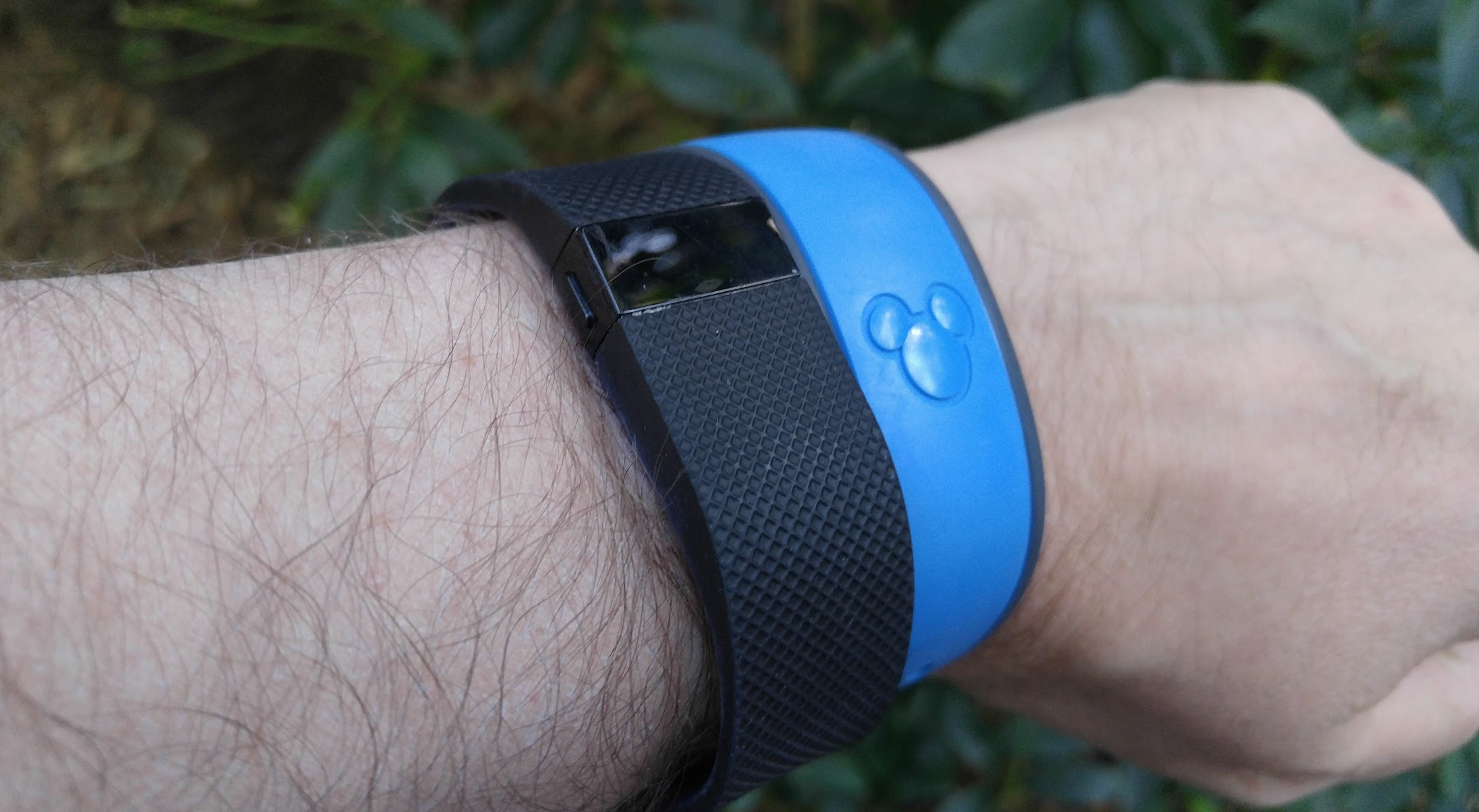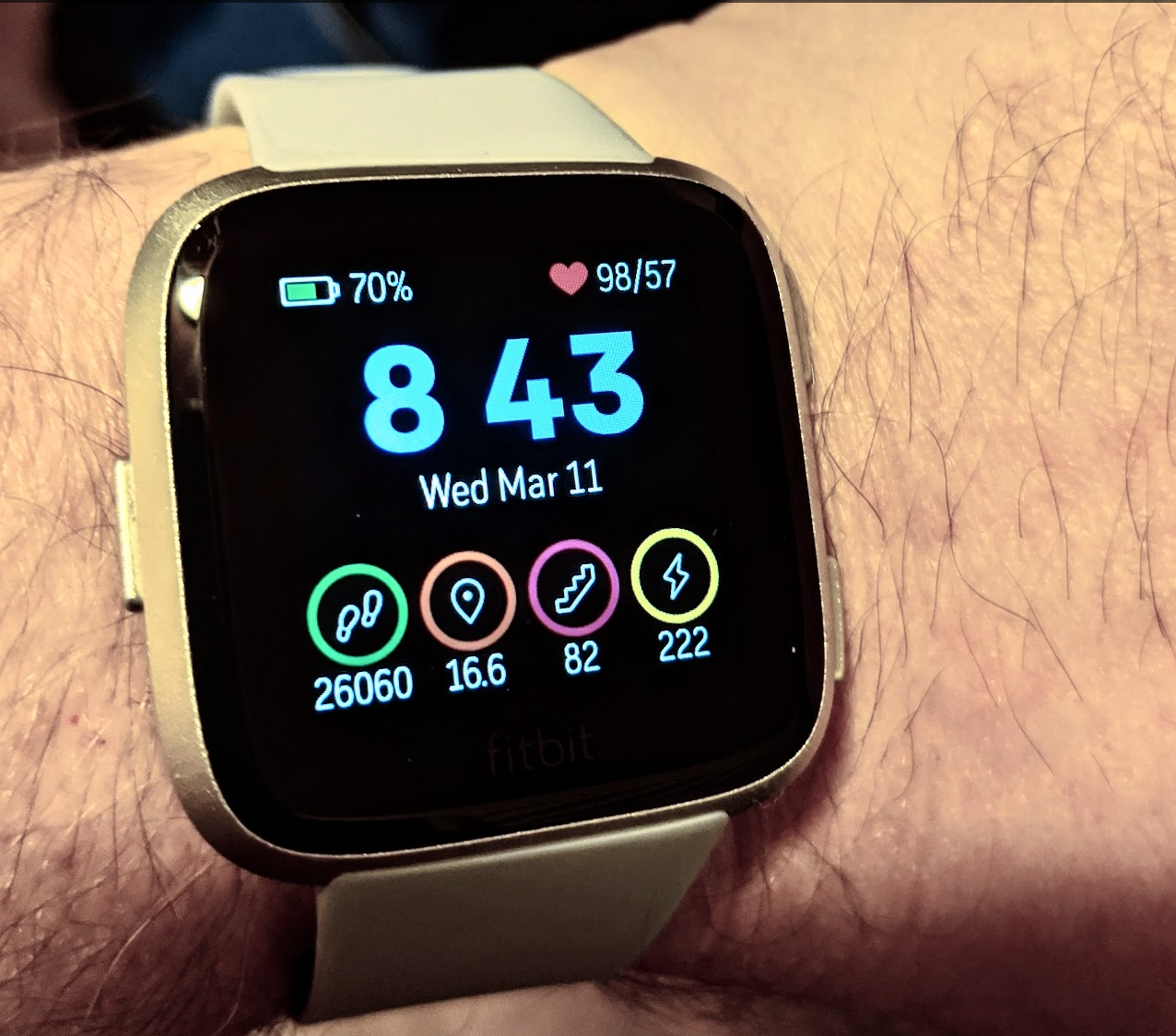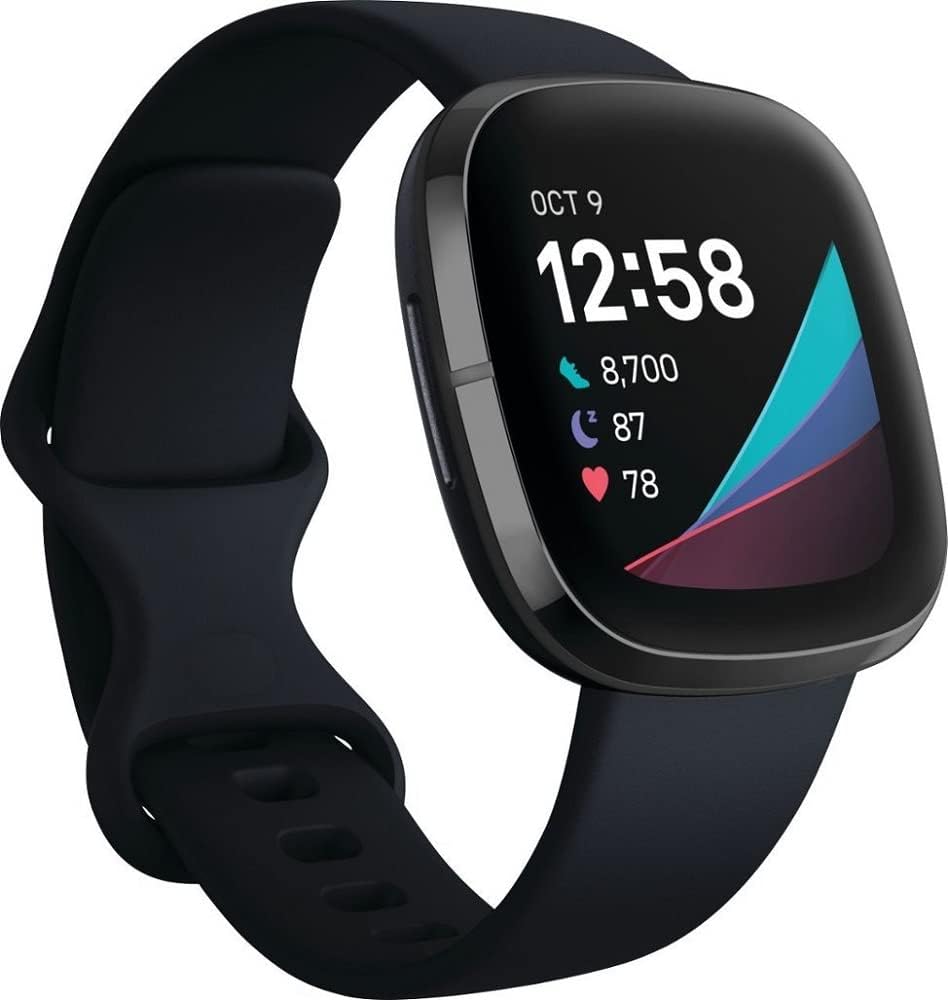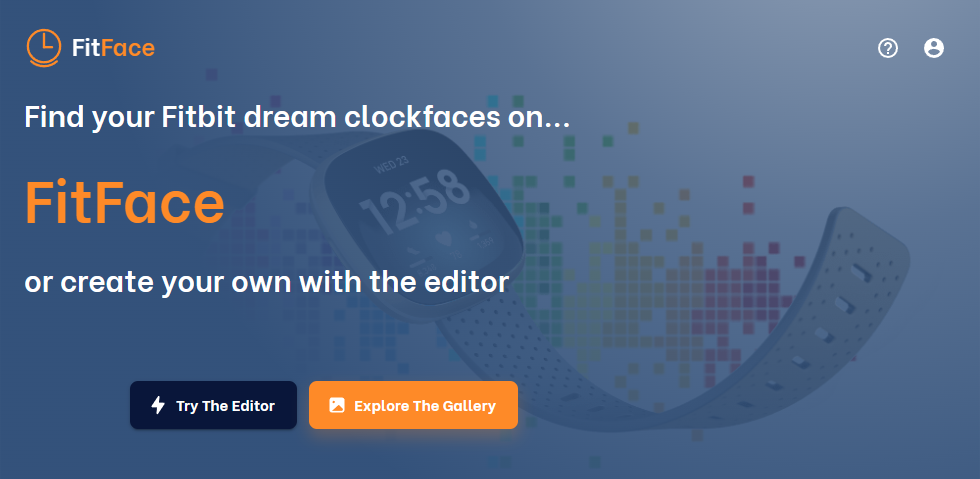In Part 1, I covered my early experiences with wrist watches, from analog, to digital. Now, in Part 2, we’ll continue my journey to my first fitness tracker: a simple pedometer that planted the seed for my later obsession with Fitbit. We’ll also take a look at my early, and admittedly clumsy, attempts to create my own watch faces.

My first fitness tracker: A pedometer
Before I ever wore a fitness tracker on my wrist, I used a pedometer that clipped to my belt. Back then, these devices used a mechanical counter, and you could hear a little “click, click, click” as you walked. I occasionally stumble across my old pedometer from time to time, (I still have it!) knowing that it represents a beginning for me. It’s interesting to remember a time when knowing your daily steps wasn’t something automatically displayed on your wrist. Using that pedometer first gave me a basic understanding. I learned that just walking around the office would add up to about 5,000 steps a day, and even more when counting the walk to and from the train.
My first Fitbit
As the 2010s rolled around, fitness trackers really blossomed and were soon followed by smart watches. One of the first smart devices I remember hearing about was the Pebble. A friend at work loved his. It looked quite interesting, but it wasn’t quite what I was after. Having previously owned a pedometer, I was more interested in a device that would change my behavior so that I’d get more exercise. Fitbit looked like it could do just that, so, in April 2015, I bought my first Fitbit: the Charge HR. This was the start of my Fitbit journey.

The Charge HR was a surprisingly capable gadget, even though its display was tiny by today’s standards. Like my first LED watch, I had to press a button to see the time, which felt natural to me. It even gave me a little satisfaction thinking about my uncle’s comments on those kinds of watches! What really impressed me was that it not only counted steps (something my pedometer did), but it also tracked my heart rate right on my wrist. The battery life, around 5-6 days, felt short compared to my old LCD watch that could last a year on a single battery.

The Fitbit companion app is good on is own
Fitbit owners are well aware that a companion phone app is needed to display all of a fitness tracker’s information and stats. I liked to check the app frequently and was quite good at using it. That’s because I didn’t begin using it when I got my first Fitbit but rather two years before. It’s not advertised, but the Fitbit app worked quite well without attaching a Fitbit device. I used the Fitbit app to track various heath-related activities. As a bonus, the app was completely free. I do prefer to use it with my Fitbit Charge HR, but using the app standalone gave me a good idea of what I could expect.
Even though Fitbit kept releasing new models, I was still happy with my Charge HR. Then, I got a lucky break. I started working with someone who knew people at Fitbit. He could get newer Fitbit devices, and he gave one to me. That’s how I ended up with the Fitbit Versa.
Hello, Versa!
This model was a huge upgrade to my Charge HR. It had a large screen and a gray band. I was uncertain about the gray band as I really wanted black, but the price was right (free!) so I didn’t complain. In addition to step tracking, it also tracked sleep and provided interesting stats about my unconscious life. One feature I was glad to get back was a calculator, and would be my first non-Casio calculator watch. It also let you load apps to further customize functionality. There was one feature I loved, and that was the ability to change its look by selecting the watch face I want right from within the Fitbit app. I used the one above regularly which also shows a particularly good day for me. I didn’t really think much about designing my own watch face but that would come soon enough.

Almost two years after getting the Versa, I decided to upgrade to the Fitbit Sense in July 2021. This one I bought for myself. One thing that was the same as the Versa was the ability to pick watch faces from the Fitbit app. I remember being intrigued by the fact that while some were free, others could be purchased. This really made me curious about the process of creating and selling watch faces for Fitbit. I even looked into Fitbit’s official tools for developing watch faces, but despite my interest, I never figured it out. It required some programming which I was not strong but the desire to create stuck with me. As it turned out, there were other methods for creating custom faces for the Sense.

Design is easy, right?
Since I couldn’t figure out the official Fitbit tools, I started looking for other ways to create watch faces for my Sense. That’s when I stumbled upon a website called fitface.xyz which greeted me with a home screen that looks like this:

The line “or create your own with the editor” really got my attention. This site not only let you buy watch faces (which they called “clockfaces”) but also had an online editor where you could design your own and even sell them. It seemed like the perfect solution, a way for me to finally create my own designs without needing to know any programming, and it looked pretty simple to use.
Turns out, it wasn’t as simple as I thought. Yes, the website let me create a watch face and easily put it on my Fitbit. But when it came to actually designing something that looked good, I was completely lost. It felt like I had too many choices, and I didn’t even know where to start. So, I just decided to try making something – anything – and see if it would sync. To my surprise, it did! My Fitbit Sense was now showing a “clockface” that I had made myself, and honestly, it was awful. Really awful. I succeeded in creating two different terrible designs before I just gave up, for the time being.
My early attempts
My very first attempt at a watch face, which I called “kind-kitten” for reasons I still can’t explain, was about as simple as it gets. It showed the current time, and that’s all. As you can see in the image below, I was clearly just playing around with the design tools. I added a drop shadow and used several background colors that didn’t even extend fully across the screen. So, besides telling you what time it was, this “masterpiece” didn’t do much of anything.

For my next attempt, I decided to get a bit more ambitious. This time, I included the date in addition to the time. I also wanted to add progress bars for the number of flights climbed and steps taken. However, as you’ll see in the image below, my design was simplistic and terrible as though I just plopped the parts onto the screen. There was more I wanted to do but I got discouraged. The progress bars didn’t even work and didn’t track their designated activity at all. Instead, they were bizarrely linked to the time of day, empty at midnight, half full at noon and completely full at 11:59pm.

This second creation, which I rather optimistically named “Please be good,” felt less like a proper name and more like a hopeful prayer. After this experiment, it would be a full two years before I stumbled upon a new tool and decided to brave the world of watch face design once again.
Little did I know that my watch face design journey was far from over, and a new device would soon provide the inspiration I needed. It’s an interesting story that I’ll continue in Part 3.

One Comment
Comments are closed.